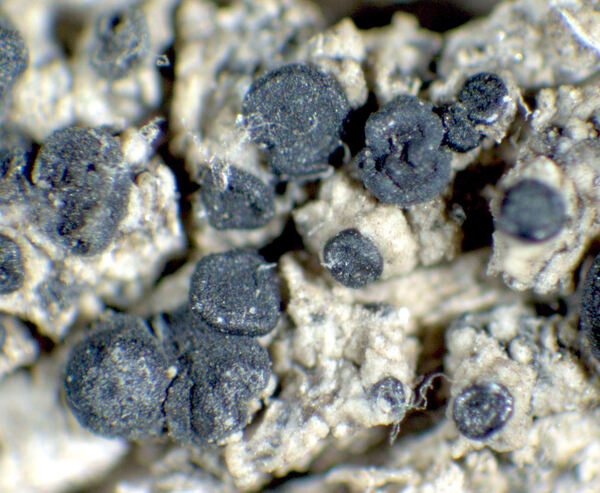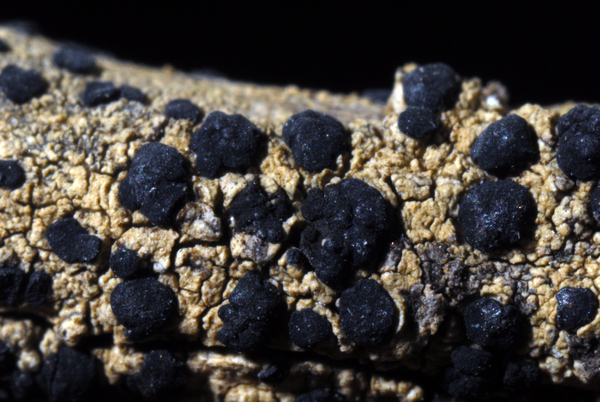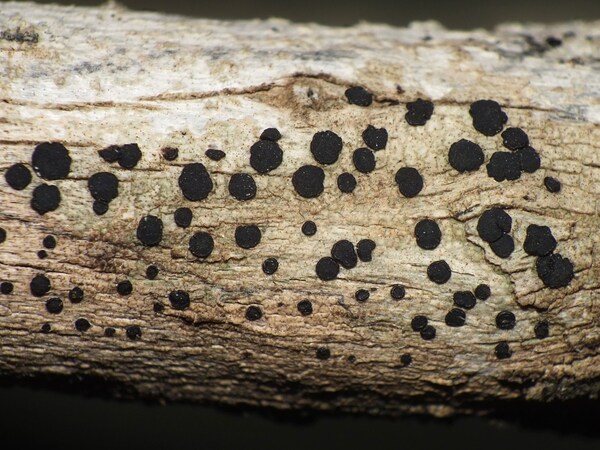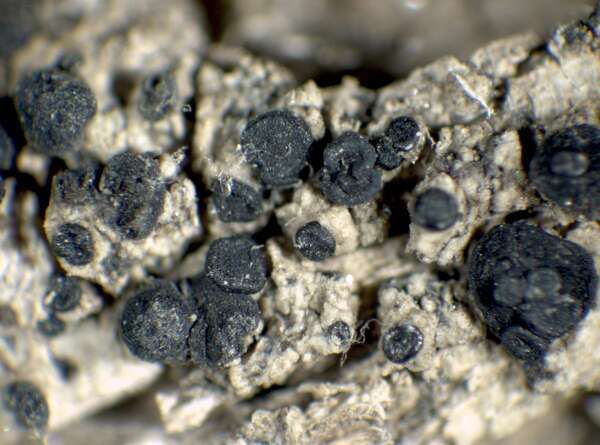Lecidella elaeochroma var. juniperina (Poelt & Nimis) ined.
Provisionally placed here, ICN Art. 36.1b.. Basionym: Lecidella achristotera var. juniperina Poelt & Nimis - in Nimis & Poelt, Studia Geobot., 7, suppl. 1: 130, 1987.
Synonyms:
Distribution: C - Sar, Laz. S - Pugl.
Description: Thallus crustose, episubstratic, continuous to areolate-verrucose, up to 0.7 mm thick, whitish to yellowish grey, often delimited by a dark prothallus. Apothecia common, lecideine, black, sessile, 0.5-1.7 mm across, often crowded and confluent, with a flat to finally convex, epruinose or faintly pruinose disc and a smooth, often flexuose, finally sometimes excluded proper margin. Proper exciple blue-green in outer part, colourless within, with crystals dissolving in K; epithecium blackish green, bluish green to dull grey-blue, rarely olive; hymenium 40-80 µm high, colourless but appearing grey, being strongly inspersed with very large, often irregularly ellipsoid, c. 5-10 µm long oil droplets; paraphyses easily made free in K, simple, rarely anastomosing or branched in upper part, not capitate; hypothecium brownish orange (K+ bright red-brown) to reddish brown. Asci 8-spored, clavate, with an intensely K/I+ blue tholus penetrated by a faintly amyloid, broadly cylindrical axial mass, and a poorly developed ocular chamber, the wall K/I-, surrounded by a K/I+ blue outer layer, approaching the Lecanora-type. Ascospores 1-celled, hyaline, thick-walled, broadly ellipsoid to ellipsoid, 7-14 x 6.5-8 µm, often biguttulate. Pycnidia globose, dark, immersed. Conidia thread-like, more or less curved. Photobiont chlorococcoid. Spot tests: thallus K+ yellow, KC+ yellow, C+ orange, P- (reactions often weak and patchy). Chemistry: unidentified xanthones.Note: on shrubs, especially Juniperus macrocarpa, in areas with sand dunes subject to humid, maritime winds, but with long periods of aridity, ecologically similar to Tornabea scutellifera.
Growth form: Crustose
Substrata: bark
Photobiont: green algae other than Trentepohlia
Reproductive strategy: mainly sexual
Most common in areas with a humid-warm climate (e.g. most of Tyrrenian Italy)
Poorly known taxon in need of further study
Taxon bound to maritime-coastal situations
Commonnes-rarity: (info)
Alpine belt: absent
Subalpine belt: absent
Oromediterranean belt: absent
Montane belt: absent
Submediterranean belt: absent
Padanian area: absent
Humid submediterranean belt: absent
Humid mediterranean belt: rare
Dry mediterranean belt: extremely rare
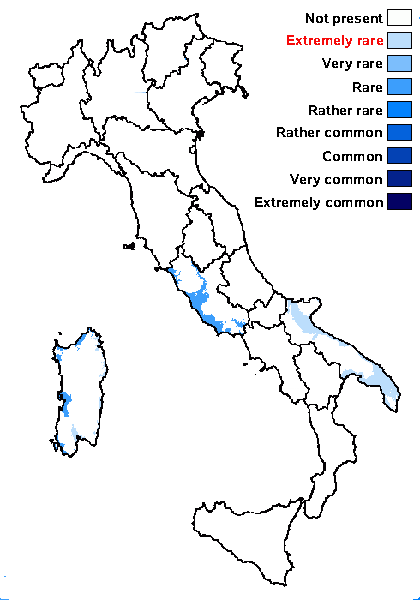
Predictive model
Herbarium samples
Growth form: Crustose
Substrata: bark
Photobiont: green algae other than Trentepohlia
Reproductive strategy: mainly sexual
Most common in areas with a humid-warm climate (e.g. most of Tyrrenian Italy)
Poorly known taxon in need of further study
Taxon bound to maritime-coastal situations
Commonnes-rarity: (info)
Alpine belt: absent
Subalpine belt: absent
Oromediterranean belt: absent
Montane belt: absent
Submediterranean belt: absent
Padanian area: absent
Humid submediterranean belt: absent
Humid mediterranean belt: rare
Dry mediterranean belt: extremely rare

Predictive model
| Herbarium samples |
